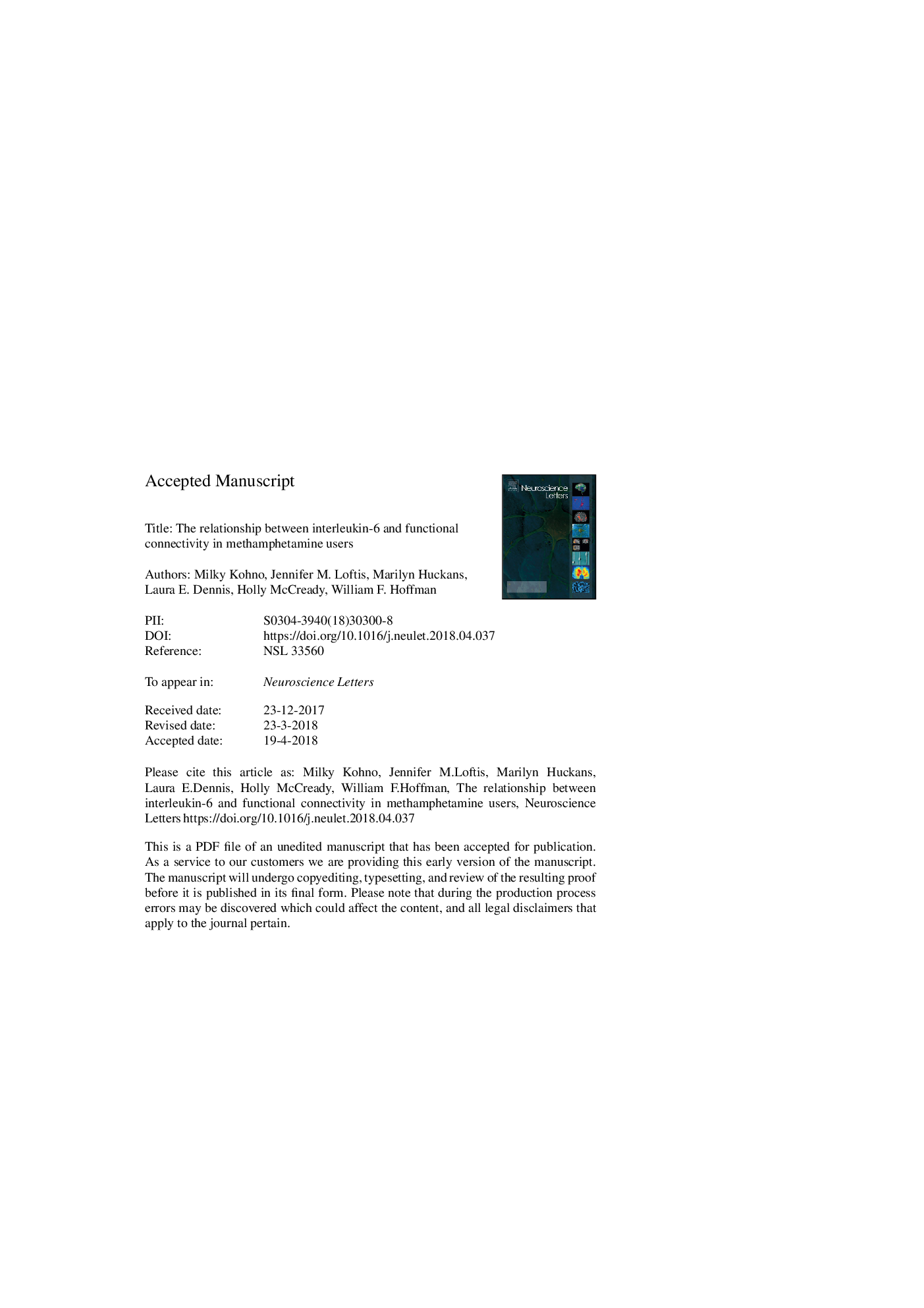| Article ID | Journal | Published Year | Pages | File Type |
|---|---|---|---|---|
| 8841490 | Neuroscience Letters | 2018 | 18 Pages |
Abstract
Methamphetamine (MA) causes an increase in pro-inflammatory cytokines in animal models and in humans. Resulting activation of microglia and neuro-inflammation could, via effects on reward networks, mediate behavioral characteristics of addiction. We examined the relationship between interleukin-6 (IL-6) and corticolimbic and striatolimbic resting-state functional connectivity (RSFC). Thirty adults diagnosed with MA dependence and 20 control subjects underwent a resting-state functional magnetic resonance imaging (fMRI) scan and gave a blood sample for determination of plasma IL-6 levels. Seed-based RSFC analyses were performed to examine the interactive effect of group and IL-6 on ventral striatal and prefrontal connectivity. Within the MA group, IL-6 levels were positively related to striatolimbic RSFC but negatively related to corticostriatal RSFC. Our findings with IL-6 support the idea that inflammation may at least partly mediate the link among MA use disorder, RSFC, and behavior, possibly via effects on mesolimbic and mesocortical dopaminergic systems.
Keywords
Related Topics
Life Sciences
Neuroscience
Neuroscience (General)
Authors
Milky Kohno, Jennifer M. Loftis, Marilyn Huckans, Laura E. Dennis, Holly McCready, William F. Hoffman,
